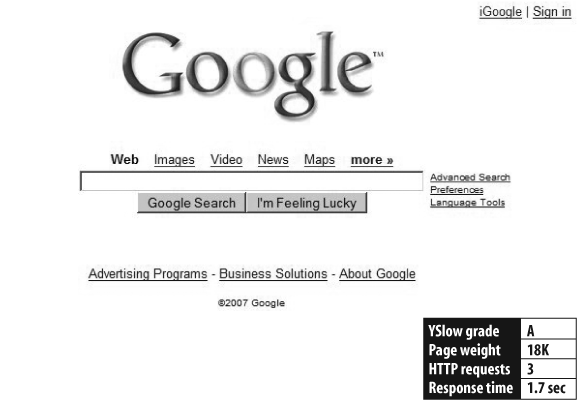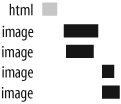
Figure 17-12. http://www.google.com
Google is known for its simple and fast page design. Its home page, http://www.google.com, is just 18K in total page size and issues just 3 HTTP requests (the HTML document and 2 images). However, even in this simple page there are several performance optimizations worth noting.
The Google page is just three HTTP requests, but Figure 17-13 shows five HTTP requests.

Figure 17-13. Google HTTP requests
The two extra requests aren't really part of the page. One is http://www.google.com/favicon.ico (see Figure 17-14). Favicons are used to associate a visual image with a URL. They are displayed next to the URL at the top of the browser, next to each URL in the list of Bookmarks or Favorites, and in tabs (for tab-enabled browsers). Browsers fetch them the first time a web site is loaded. If a web site doesn't have a favicon, a default icon is used.
Figure 17-14. http://www.google.com/favicon.ico
The second extra request is for http://www.google.com/images/nav_logo3.png, shown in Figure 17-15. This is a CSS sprite, a combination of images that was described in Chapter 3. I say it is not part of the page because it is loaded after the page is done, as part ...
Get High Performance Web Sites now with the O’Reilly learning platform.
O’Reilly members experience books, live events, courses curated by job role, and more from O’Reilly and nearly 200 top publishers.

